Weather is the ruler of life and activity in the Everest region. On April 18, weather caused catastrophe on Everest. An avalanche on the Khumbu Icefields killed 16 sherpas, the worst disaster ever on Everest. More than 4,000 climbers have summited Everest since Sir Edmund Hillary and Tenzing Norgay first did in 1953. The ripples of this year’s horrific event will affect thousands of sherpas, porters and more who were to make the majority of their earnings for the year during the short climbing season. All expeditions to summit Everest were cancelled for this season.
There are many treks in the Everest area besides actually trying to summit Everest. Just getting to Everest Base Camp at 17,600 feet is an arduous 8-12 day bucket list adventure for many. Ours was not nearly so ambitious; we would spend just 5 days in the region, hiking up to the famed Namche Bazar at 11,320 feet and a few other villages up to 12,500 feet.
Fog and clouds delayed our departure from Kathmandu to Lukla. Though we had an appointment for later in the week at the US Embassy (oops, used up all our passport pages), we decided to go wait in line while we hoped for the weather to clear. We weren’t allowed to take a picture of the US Embassy, even from across the street. The inside looked like any DMV in Dallas (with a switch of nationality of the waiting patrons). Of course, by the time we emerged with fat enhanced passports in hand, our nervous guide, Lhakpa, said the last flight had taken off for Lukla. Hurrying the driver toward the airport, he assured us he still thought we could get there. Huh?
Turns out, Yeti Airlines, Tara Airlines, Thamserku (our trekking company) and the Yeti Mountain Homes (Lodges) we were booked in are all owned by the same company. All smiles and high-fives, his associates were waiting to rush us through security at the airport. Lhakpa led us out to the Tara Air ‘cargo’ plane that would carry us to Lukla. This was actually a 14-seat passenger plane, but for this trip, it had 12 seats full of beer and rice… and us. Funny.
The real adventure though started as we neared Lukla, as thrilling a plane ride as we’ve ever had. We passed so close to mountains we felt we could touch them, and landed on a 1500 foot uphill landing strip hewn out of the rock mountainside at 9,400 feet. Welcome to Tenzing-Hillary Airport. Since we’ve now landed and taken off successfully, I’ll share these videos from YouTube. And our video of the downhill takeoffs.
The hiking and the terrain in the Mt. Everest region was much different than the Annapurna area. The rugged cliffs, giant fir trees, milky blue glacial rivers and looming peaks all around were much more reminiscent of the Canadian Rockies (except the looming peaks here were 20,000-28,000 feet high).
At some point the trails may well have been nicely paved stone walkways like the Annapurna area, but constant streams of mules, oxen and yaks carrying goods from Lukla upwards (no roads at all up here) have made them treacherously uneven, especially when slippery with mud. This area was also MUCH more crowded, the trails an almost constant highway of hikers, porters, and animals. There’s just one thing you need to know about oxen trains and that is, “Get out of the way.” Each sharp-horned behemoth is loaded with 150 to 200 pounds of duffel bags, stoves, tables, chairs, you name it. The advice given: “Make sure you’re on the inside of the trail” when a beast train passes you. The choice between the oxen’s horns and the steep mountain slope was a no-win situation.
Given the higher altitudes, the temperatures were much colder than either Kathmandu or the Annapurnas. Thank goodness for electric heating pads on the mattresses and, since they didn’t reach the full length of the bed, for the trick of putting a bottle full of hot water down by my toes at night (learned that on the Kilimanjaro Trek). Where are those heated Japanese toilet seats when you really need them?
Every time we stopped for a break, a meal or arrival at a lodge, we were offered hot lemonade and hot tea. Hot water (never cold) was always served with our meals. Most of the lodges kept the guest ‘lounge’ nice and cozy with a wood burning stove. The Lukla lodge was by far our least favorite because they didn’t do this (spoiled, I know). We stayed there once on arrival and once on our way out, and for most of our time there, you could find me reading in bed, warmed by the heating pad. Even there, though, we felt lucky to be staying in Yeti Mountain Homes; they are by far the nicest accommodations anywhere in the Everest region.
We crossed several high suspension bridges, often narrowly passing porters carrying huge loads or even animal trains. At one point a runaway yak, somehow escaped from his owner with no load at all, ran towards us all by his lonesome and luckily passed without incident. He was “Freeeee!!!!” At least for a moment.
We had several possible points in our trip for views of Mt. Everest, but alas, the weather gods were not with us and we never got a glimpse. Too bad… but there’s always next time 🙂
Funny From the Trip:
Conversation with Yeti Mountain Lodge waitress:
Me: “Do you have any tonic, you know, tonic water?” (We hadn’t found any during the entire trek, nor any Diet Coke, Coke Zero or wine.) “Like to make a gin and tonic with, the drink gin and tonic?” Gesturing with my hands the pouring together of gin and tonic into a tumbler.
Her: “Oh yes. I’ll get.” Turning away towards the bar, then instantly turning back. “Except no tonic, only gin.” Ha.

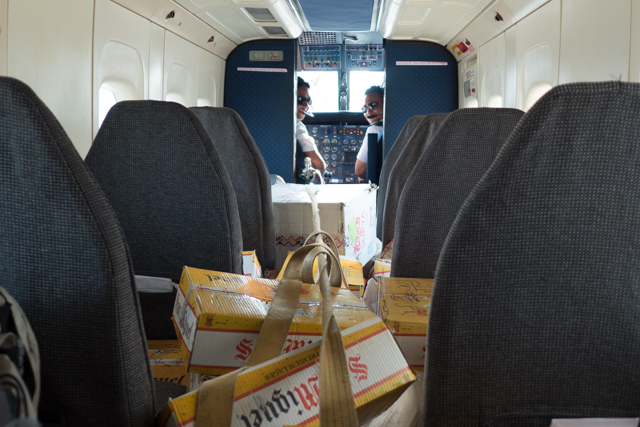
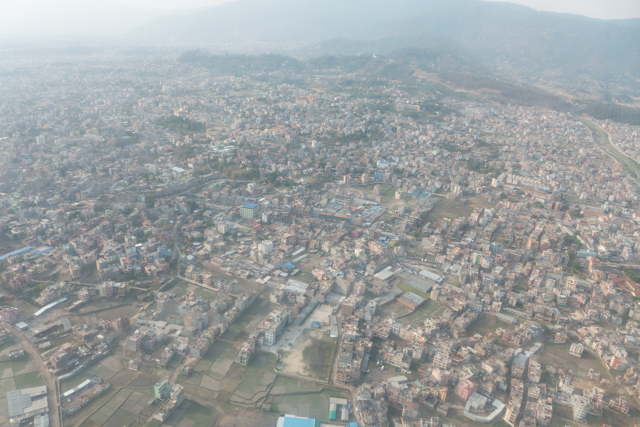
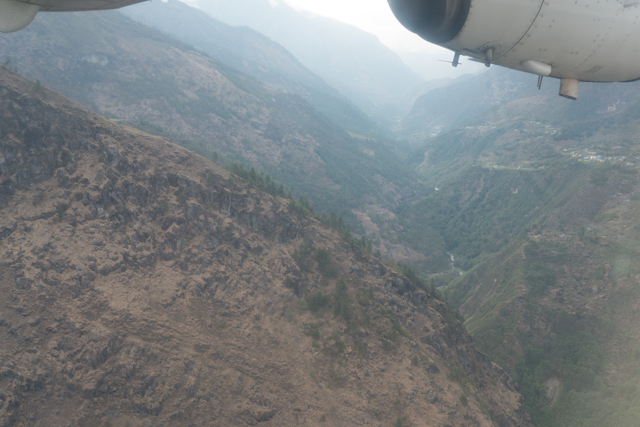
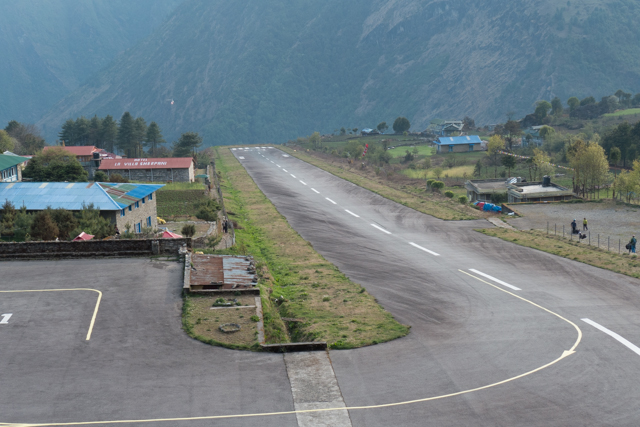
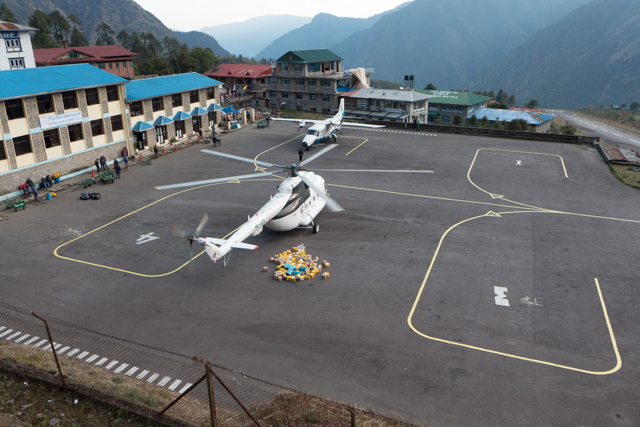
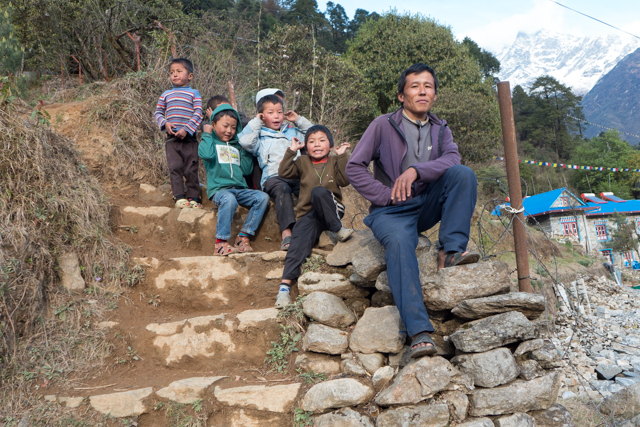
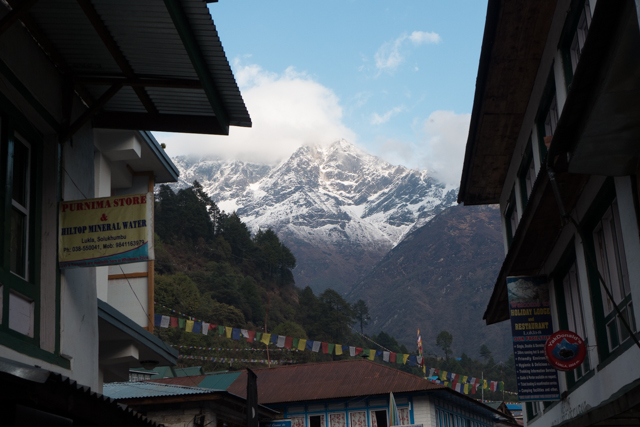
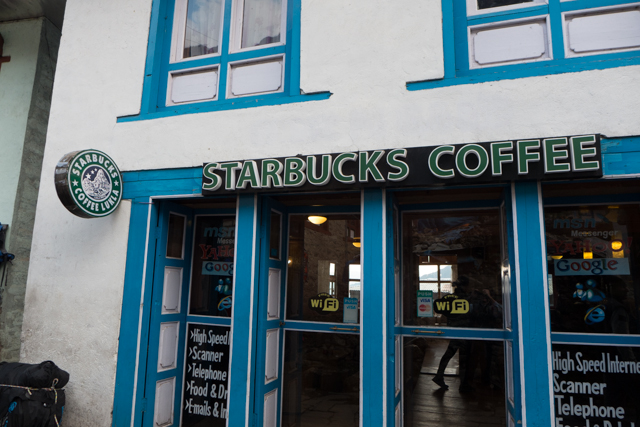
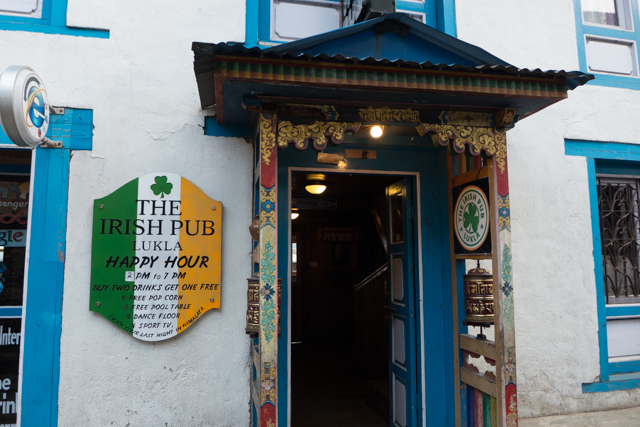
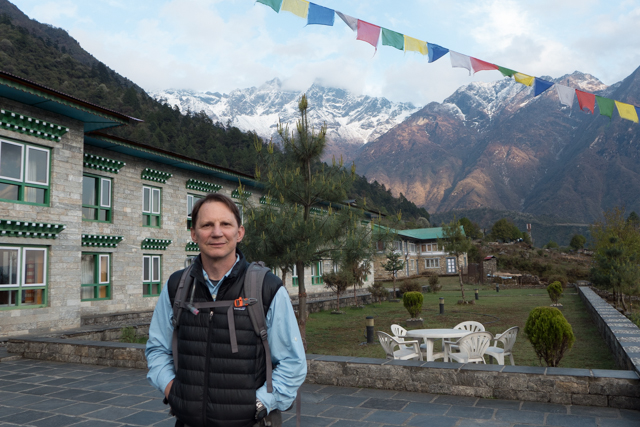
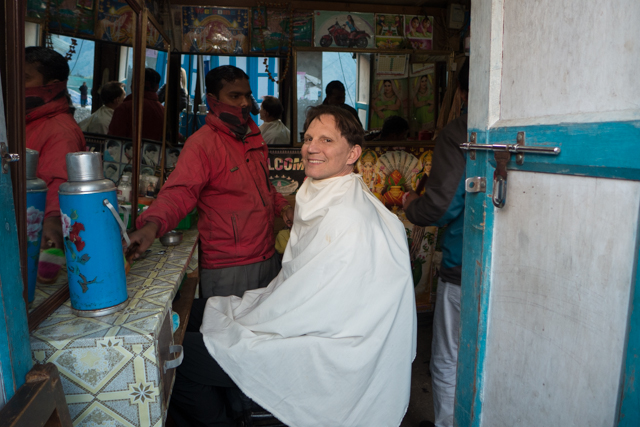
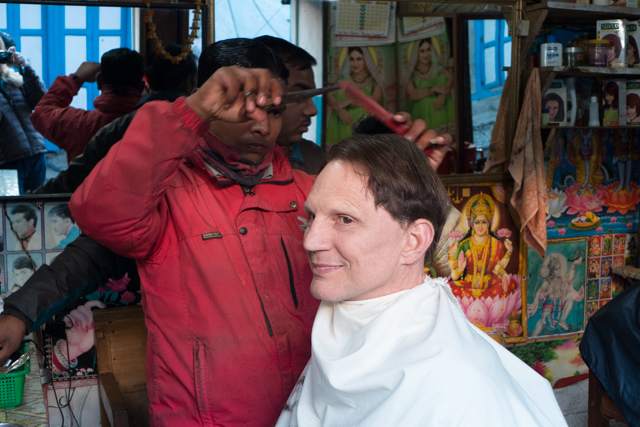
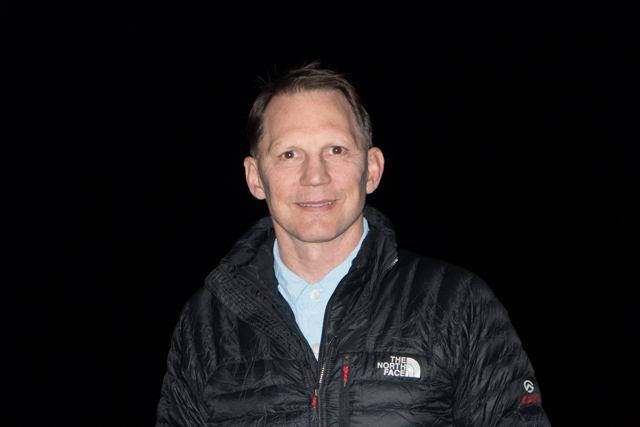
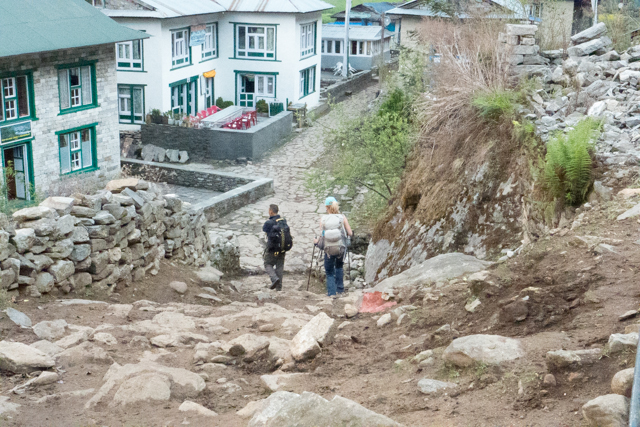
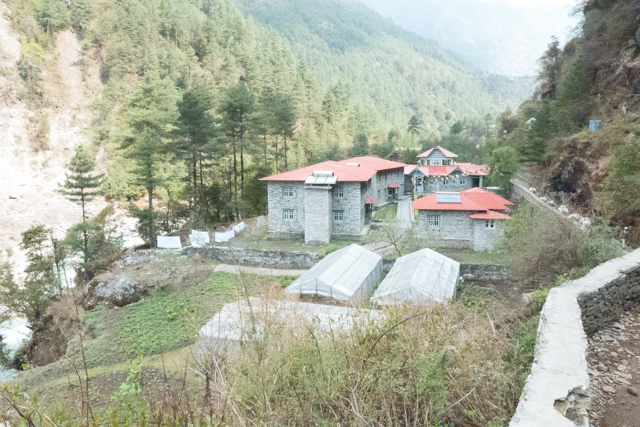
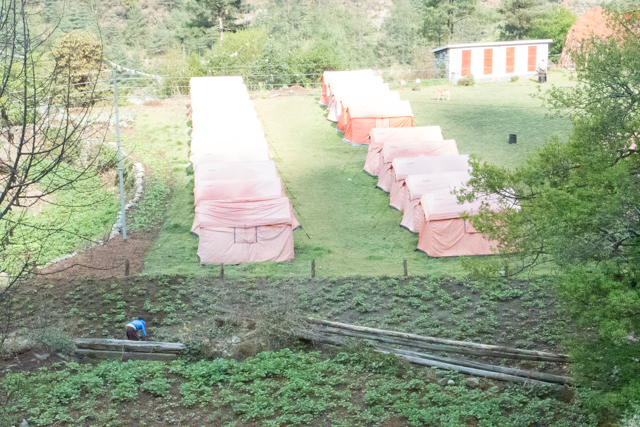
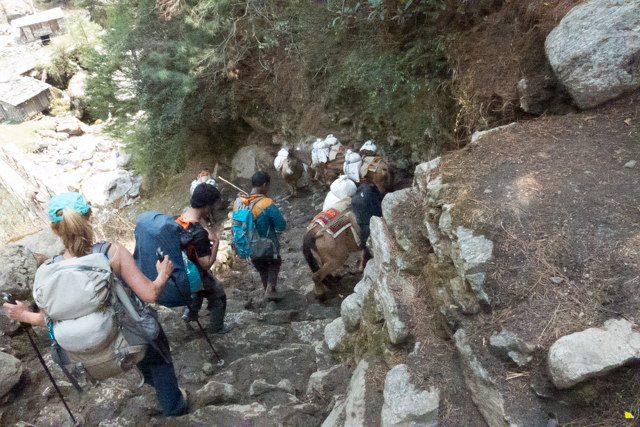
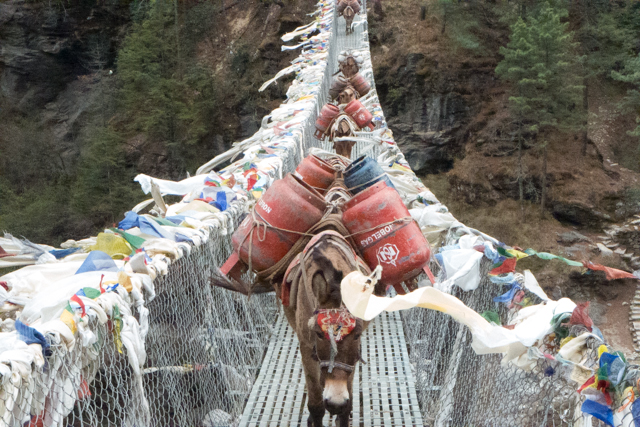
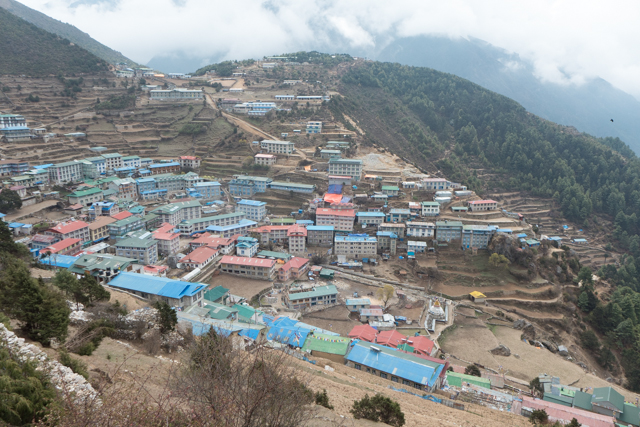
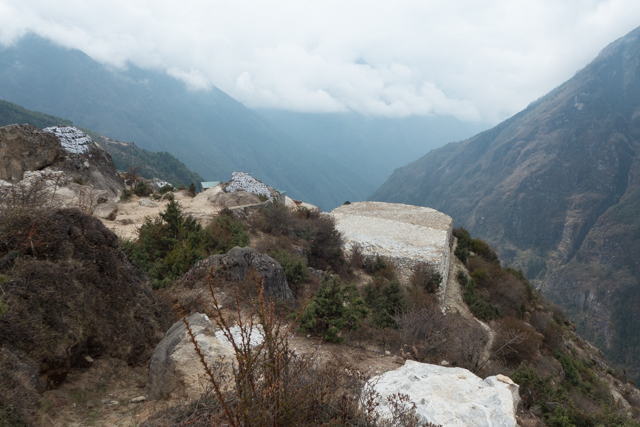
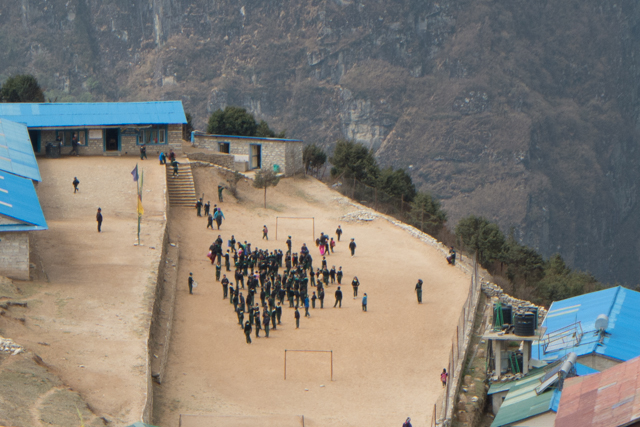
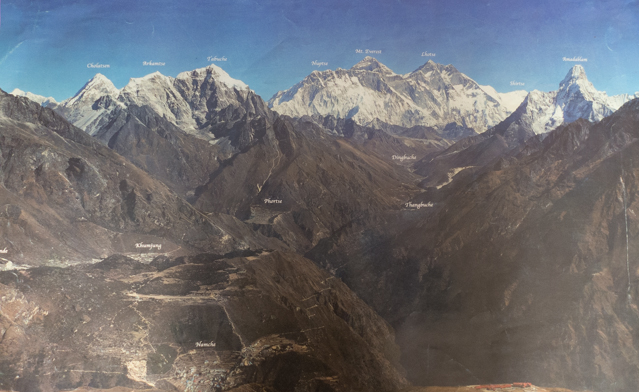
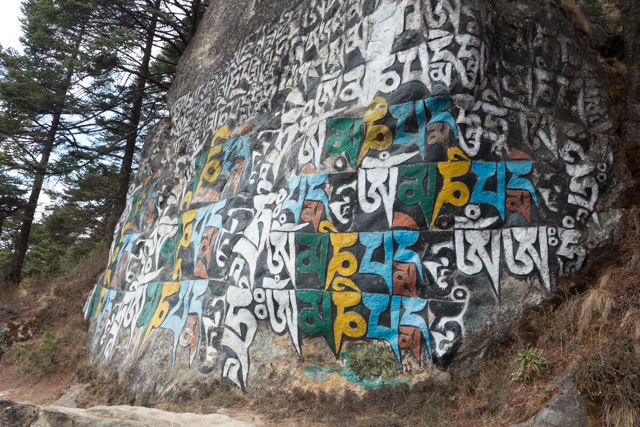
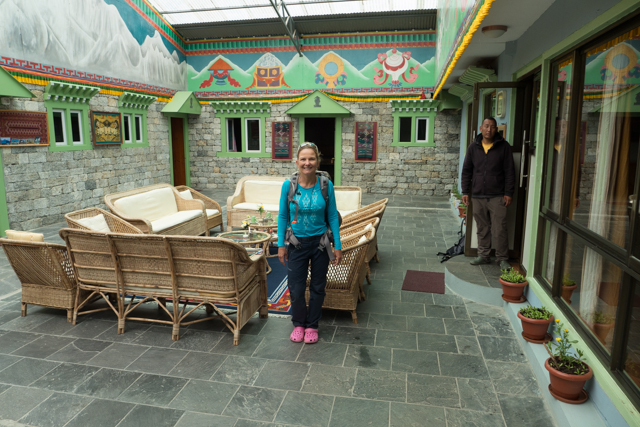
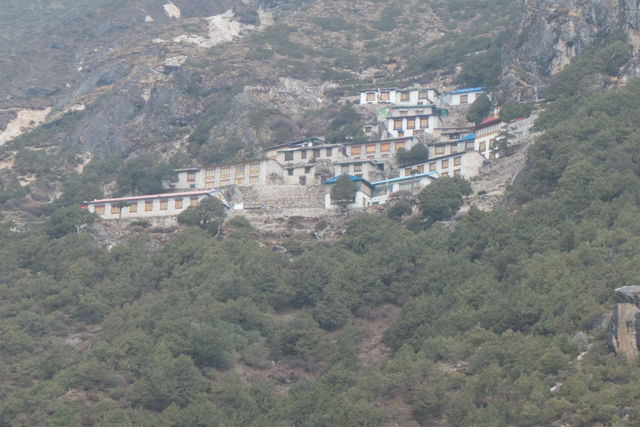
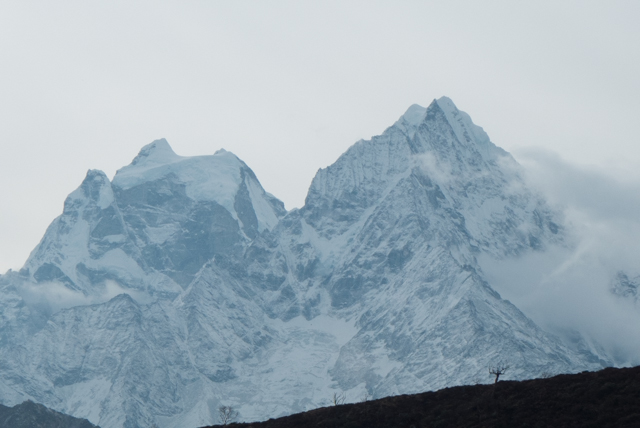
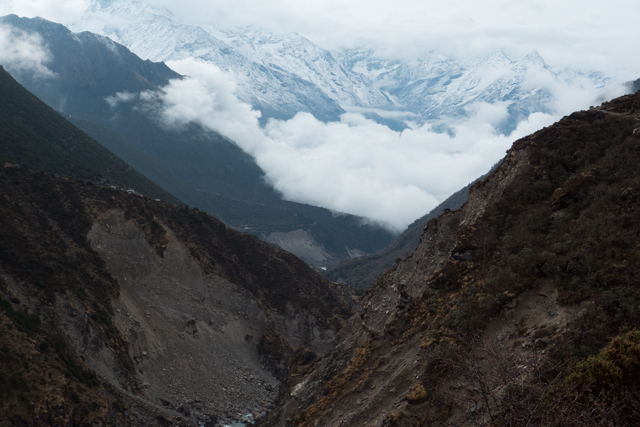
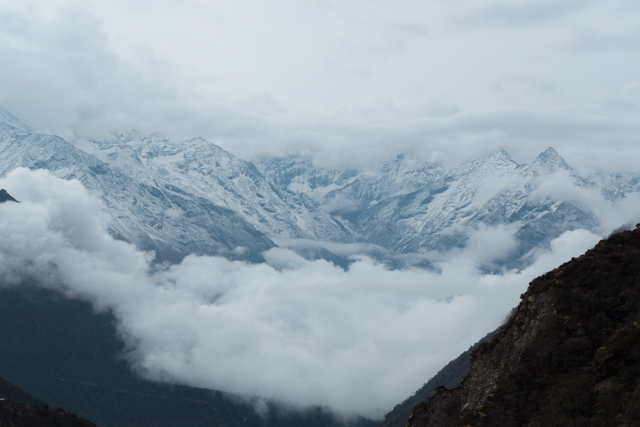
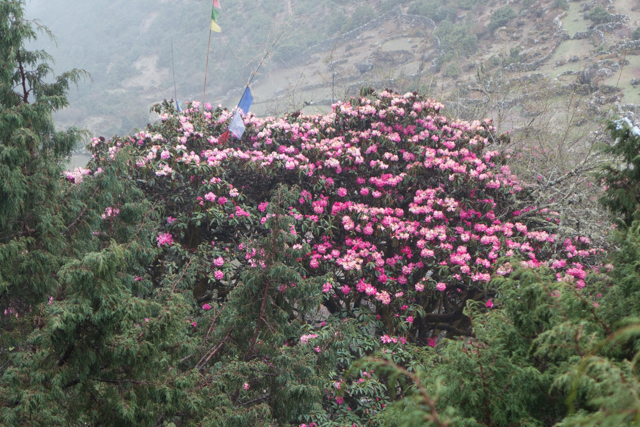
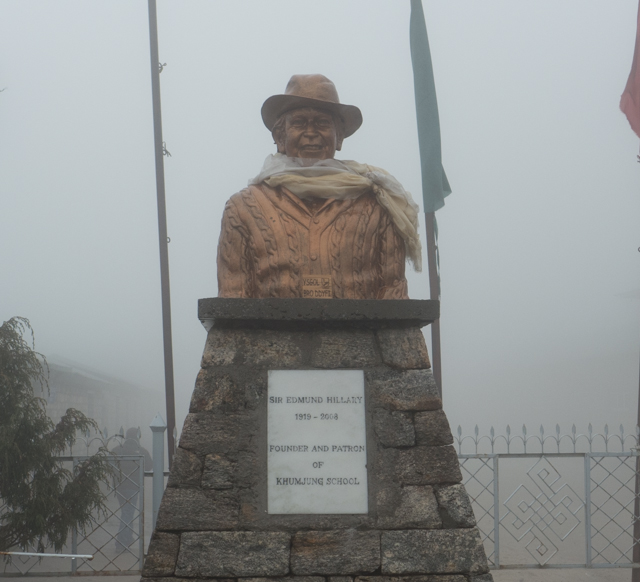
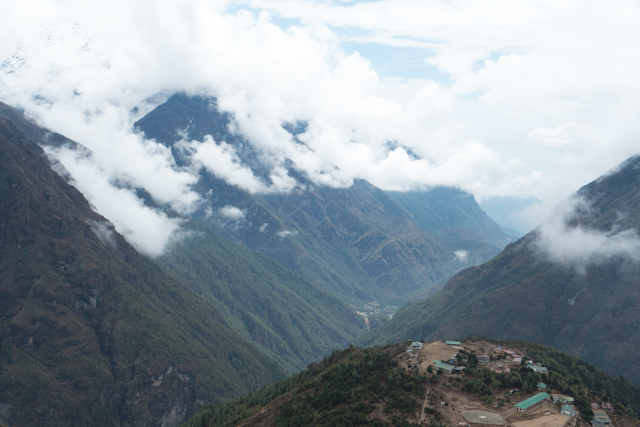
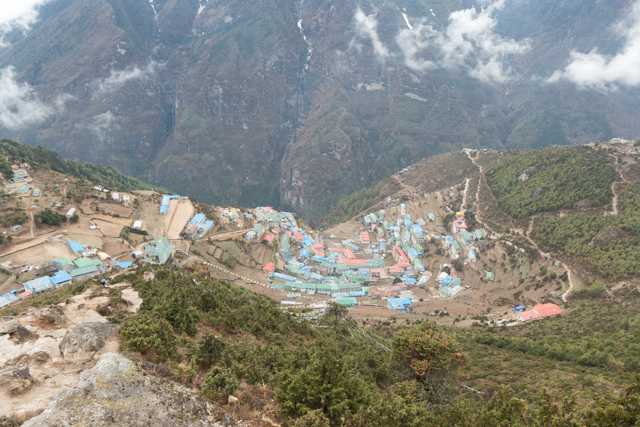
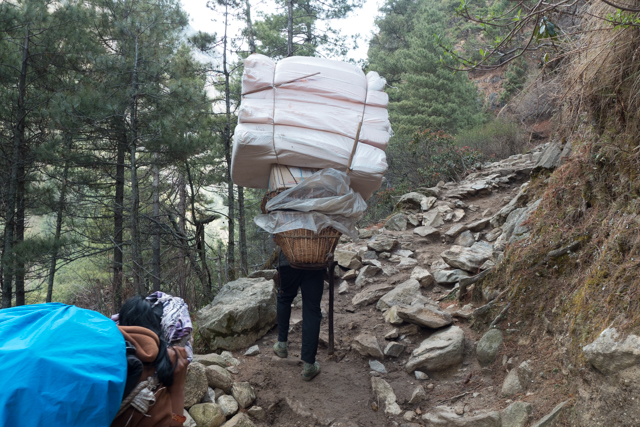
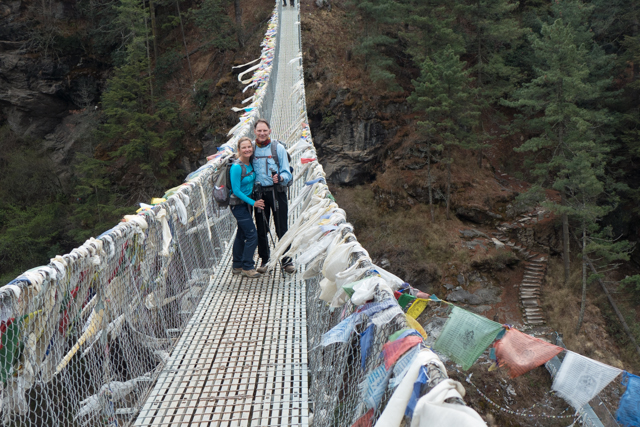
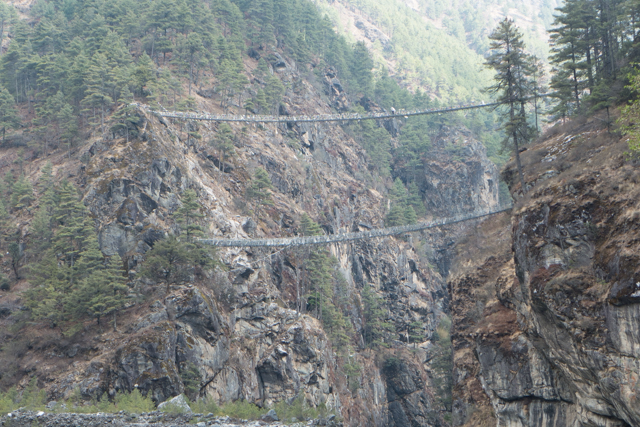
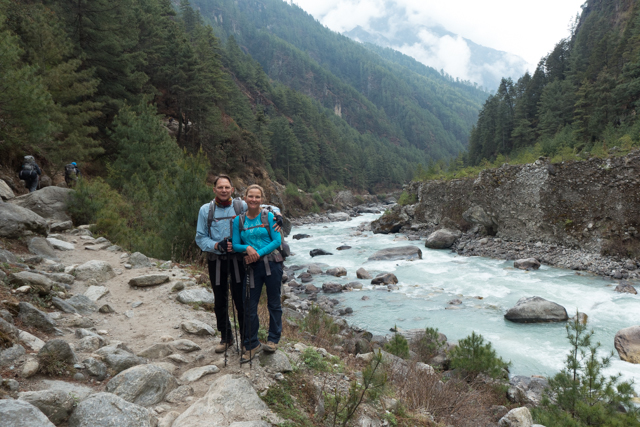
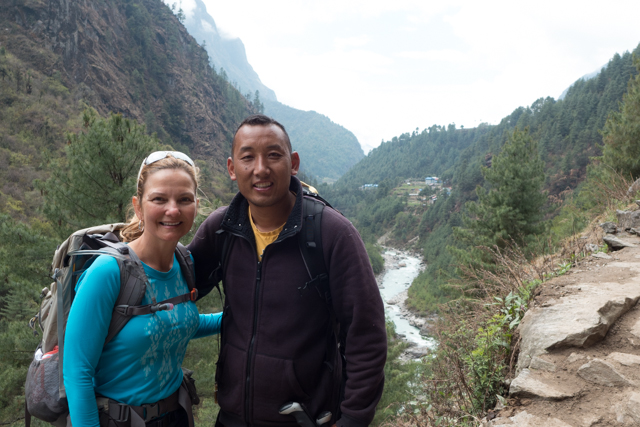
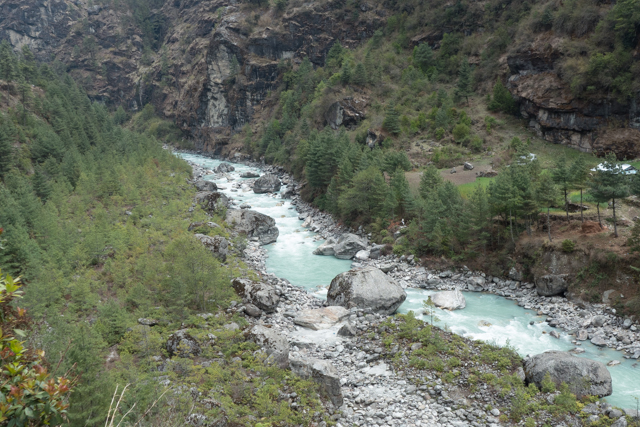
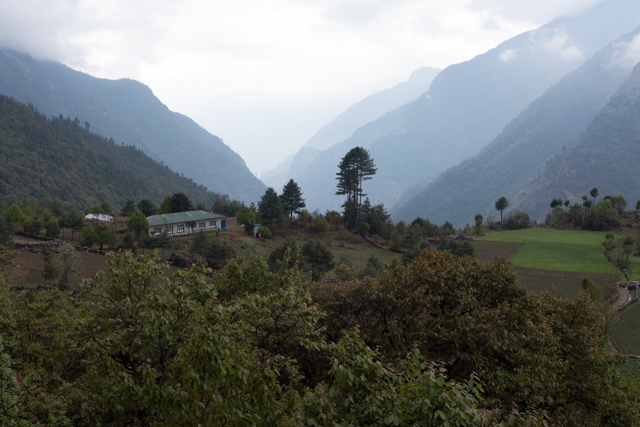
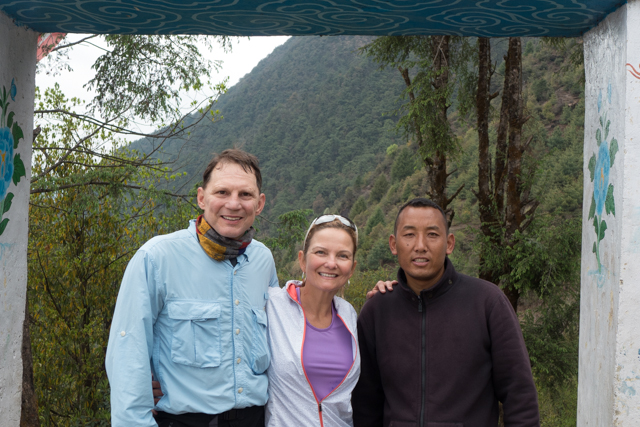
Trip planned by GeoEx.
Local Nepalese trek company: Thamserku Trekking.

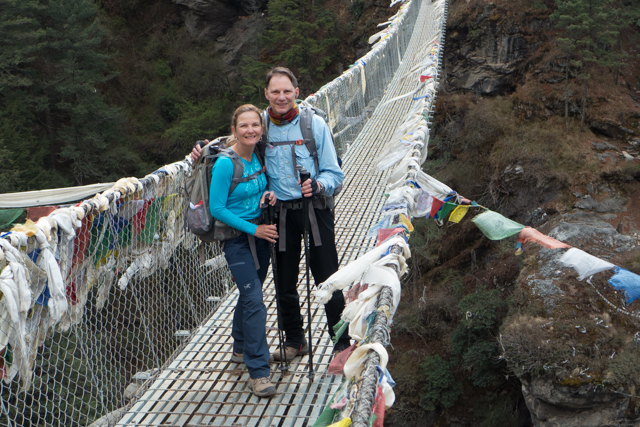
Woah! That bridge! You’re a stronger woman than I, but of course, we knew that already!